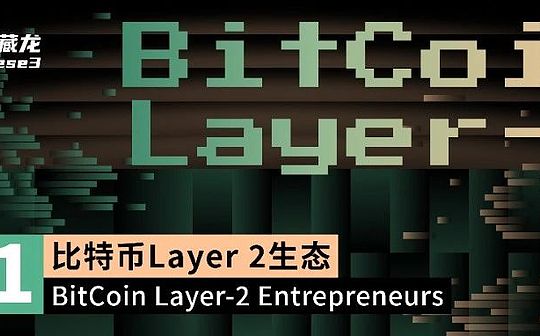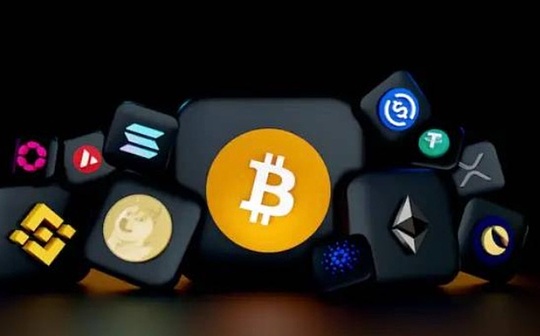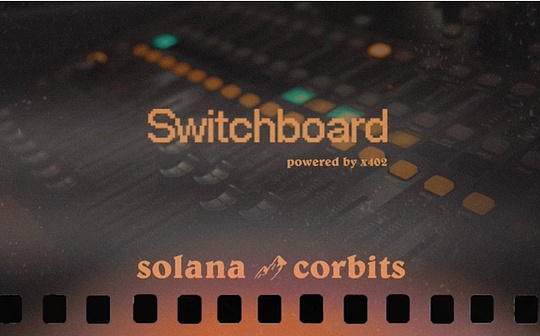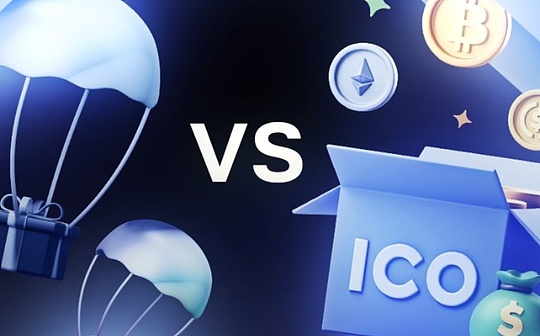
Source: The Seedao
01Bitcoin L2Analysis of historical evolution and status quo
Bitcoin L2 technology has attracted much attention since the birth of Stacks in 2015. With its unique side chain or status channel technology solution, it aims to introduce intelligent contract functions or enhance the application of payment fields for the Bitcoin network.However, before 2023, the technology did not receive widespread attention and application, because Bitcoin was mainly regarded as value storage and investment tools, and the ecology on the chain was relatively barren.
However, it became a turning point in Bitcoin L2 technology in 2023.With the outbreak of the main network asset issuance agreement, the activity of transactions on the chain has increased significantly, and the Bitcoin network rate has once soared to 600SAT/VB.At the same time, a number of high -quality assets such as ORDI, Blue Box, Bitmap, Nodemonkes, etc. have emerged, injected new vitality into the Bitcoin ecosystem.People began to recognize the huge potential of Bitcoin L2 in the construction of diversified applications including DEFI, GameFi, and NFT encryption art.
From the perspective of responsibility and mission, the Bitcoin L2 project born around 2023 also shows different characteristics.Early L2 projects were mainly focused on bringing smart contract functions and scalability to Bitcoin, which is similar to the function of Ethereum L2.The L2 project that has been born in recent years has paid more attention to meeting the actual needs (such as pledge needs) and strengthening the liquidity and playability of high -quality assets.Although these new projects have been questioned by traditional forces in some ways, they undoubtedly injected new impetus into the diversified development of the Bitcoin ecosystem.
Looking forward to the future, with the continuous improvement of technology and the gradual expansion of the market, the Bitcoin L2 is expected to play a more important role in the cryptocurrency ecosystem.We look forward to seeing more innovative L2 projects emerging, contributing to the prosperity and development of the Bitcoin ecosystem.
02Currently BitcoinL2’s controversial hotspot
At present, the Bitcoin L2 field is in the stage of rapid development, and various innovative technologies and applications are constantly emerging.However, at the same time, controversy about the necessity, trustworthiness and orthodoxity of L2 also exists.
Regarding the necessity, the Bitcoin community has always adhered to a conservative attitude.Many core developers have reserved opinions on BTC Layer2 technology, thinking that it is not necessary, and it is more inclined to maintain Bitcoin as a pure digital gold.Some extreme Bitcoin Native Territors are even more exclusive to all innovations related to DEFI and NFT, which runs counter to the development direction of BTC Layer2 technology.In addition, there are many stakeholders in Bitcoin, but they lack an authoritative voice that can unify rivers and lakes.Compared with the clear development path of Ethereum Rollup, BTC Layer2 is difficult to form a strong synergy.Even if some head protocols have achieved billions of dollars in TVL, their necessity is still questioned by some communities and developers.
In terms of trustworthiness, there are many types of solutions for BTC Layer2, but there are few solutions that can lead.One of the important reasons is the credibility of these solutions.Because BTC itself does not support smart contracts, many BTC Layer2 solutions have to adopt a relatively primitive method of signing more.Users need to deposit BTC assets into multiple address, and then generate corresponding assets on Layer2.This method has hidden dangers in terms of capital security, and it constitutes a huge challenge to users’ credibility. Therefore, the BTC Layer2 project with similar solutions has been controversial.
As for orthodox, this year’s old Bitcoin information media “Bitcoin Magazine” clearly put forward the standard of BTC Layer2 in its official post.These standards include: use Bitcoin as native assets; use Bitcoin as a settlement mechanism to enforce transactions; display the functional dependence of Bitcoin.According to these standards, some popular projects on the current market seem to be in line with the definition of BTC Layer2.However, after interpretation of all parties, this article more reflects the ideological dispute of ideology.The Western encrypted circle tries to establish the orthodox status of certain projects by re -establishing standards, thereby reshaping the narrative of BTC Layer2.
In summary, the BTC Layer2 track is still in the early stages of development, and various disputes show that the field is still full of opportunities.If the track lacks controversy and is highly consistent, it may mean that it has entered a mature period. For participants, early dividends will be greatly reduced.
03Bitcoin Layer 2Popular project

1. B² network
Project basic information:
Blockchain bridge, ZK Proof, ROLL-UP
(1) Official Twitter: @BSQUAREDNETWORK
(2) Official DC:
https://discord.com/invite/bsquarednetwork
(3) Official TG:
https://t.me/bsquared_chat
Project technology introduction:
(1) Rollup layer: B² network uses ZK-Rollup as the Rollup layer, and the ZKEVM solution is responsible for the execution of user transactions in B2 blockchain and the output of related certificates.
(2) Data Availability layer: The availability layer includes decentralized storage, B² nodes and bitcoin networks.This layer is responsible for the copy of the Rollup data permanently, verify the Rollup ZK proof, and finally confirm the final confirmation of Bitcoin.
(3) Trading process

Note 1: ZK-Rollup.ZK-Rollup is the organic combination of zero-knowledge proof and integration of transaction information.Zero knowledge proof is used to ensure the accuracy, integrity and security of the information during the integrated transaction process.
Note 2: Zero knowledge proof.Zero-Knowledge Proof (ZKP) is a proof system, including proof, verification, and challenges, which allows proofers to prove the authenticity of a confidential information without disclosure of any practical information.
Note 3: roll-up.ROLL-UP reduces the burden on the main network by moving the calculation and storage of transactions to Layer2.The basic principle is to roll up a bunch of complex transaction processes, as a simplified transaction, and then send these transactions to the main network for verification and settlement.
Community activity:
As of April 3, the official Twitter of B2 Network has 40W+ followers, the official Discord has 25W+ certified members, the official Telegram community has 11W+ participants.Essence
Team profile:
At present, the information of the B2 Network project team is uninteresting, so it can only be used in Twitter information.B2 team members are distributed in the United States, Britain and Singapore.
Person in charge of ecosystem: NONOO
Research person in charge: Stone
Ambassador: J25

2.bevm
Project basic information:
Blockchain bridge, cross -chain bridge, pledge
(1) Official Twitter:@btclayer2
(2) Official DC:
https://discord.com/invite/grj72rcRNK
(3) Official TG:
https://t.me/+GewGMTYG_5K2MTLL
Project technology introduction:
(1) Assets from Bitcoin Blockchain to BEVM
BEVM has deployed the complete and complete Bitcoin main network data of the light node to ensure decentralization and the correctness and effectiveness of the data, and realize the transaction data and transaction certificates that are synchronized when user assets need to cross the chain.After completing one -way cross -chain interaction.
(2) Assets return from BEVM to Bitcoin Blockchain
BEVM uses Taproot technology and POS consensus mechanisms to achieve BEVM’s chain assets and data in a decentralized manner to return to Bitcoin’s main network across the chain.
BEVM’s Taproot consensus consists of three parts: the first part: TAPROOT technology, including Musig2, Schnorr signature, MAST, etc.Part 2: BFT POS network consisting of Bitcoin SPV.The third part: communication through the threshold node formed by the signal protocol.
(3) Framework for achieving core functions
BEVM uses the Substate framework to build a blockchain to achieve EVM compatibility and use Bitcoin as the underlying logic of GAS Fee.
(4) The overall technical framework
The overall technical framework of BEVM is divided into four layers from bottom to top. The first layer is decentralized interaction layer of the Bitcoin main network and the BEVM chain. The second layer is the consensus layer of Aura and Grandpa.Compatible with EVM smart contract layer, the fourth layer is the application layer that supports programming language solidity to construct DAPP.
Note 1:Light nodeEssenceIt refers to a device or software connected to the blockchain. Compared with the full node and miner nodes, it has small storage space and bandwidth requirements. It only preserves block head information and does not save complete blockchain historical records.
Note 2:Block head information.In the blockchain network, the block consists of two parts: block head and block.The block head contains rich information, including the hash values of the previous block, the current block value and timestamp of the current block, the information of the transaction execution and the work information of the miner.
Note 3:Taproot.Taproot refers to the technology that signature transactions to improve transactions through multiple parties and reduce transaction costs.
Note 4: Prove to POS.The POS consensus mechanism is a way to generate a new block through pledged digital assets, which can prevent repeated calculation problems and significantly reduce energy consumption.
Note 5:Substate framework.The Substate framework provides a modular and scalable method to build a blockchain application.
Note 6:Aura and Grandpa.Aura is a consensus algorithm that is used to create blocks and take turns.It is an upgraded version of DPOS (Delegated Proof of Stake) consensus algorithm, which has the characteristics of high TPS (Transactions Per Second).Grandpa is a permissions for final determination of the block.It uses the longest chain rules to vote and use it with Aura.Grandpa is a consensus mechanism for determining the block, which forms a blockchain with AURA.
Note 7:DAPP.DAPP refers to the Decentralized Application, which is an application running on the blockchain.
Community activity:
As of April 2, BEVM’s official Twitter had 23.2W+ followers, the official Discord has 4W+ certification members, and the official Telegram developer community has more than 3,400 ecosystem developers.Essence
Team profile:
Founder and CEO: Guo Guanghua.
The BEVM team was established in 2017; in 2018, the BTC L2 solution CHAINX was launched, achieving a 100,000+ BTC cross -chain, 500,000+ BTC Hash Lock; in 2021, based on the Bitcoin Taproot upgrade, the BEVM team built Taproot Consensus Bitcoin 2nd floor.Solution; in August 2023, the BEVM Pioneer Network was officially launched, achieving 6 million transactions, 100,000+chain users, 30+ecological projects; on March 25, 2024, BEVM announced the completion of 10 million US dollars financing, round A investment A investment, round A investmentAfter the valuation of up to 200 million US dollars, as many as 20 investment institutions.

3. AtvoS CKB
Project basic information:
(1) Official Twitter: @Nervosnetwork
(2) Official DC:
https://discord.com/invite/fkh8zzvwqa
(3) Official TG:
https://t.me/nervosnetwork
Project technology introduction:
(1) UTXO model:
The UTXO model is like a sex wallet with a password and containing money. It can only be used by mastering a specific password (output address).Although the wallet is one -time, the assets in UTXO must not be exhausted at one time.If you only use part of the assets in the UTXO, it is like pulling out part of the money to install another one -time wallet with a password, and the remaining part of the assets will be pulled out and puts in another new one -time password.Wallets, so on.
(2) Proposal of layered concepts:
CKB belongs to Layer1 in traditional concepts, and provides the possibility of storing all kinds of assets with extensive consensus by building “common knowledge base” by building “common knowledge base.In the current concept, CKB has become the Layer2 of Bitcoin Block Chain without losing the traditional Layer1 attribute.
(3) RGB ++:
The RGB protocol is not a blockchain network technology. It is a non -block decentralized client verification technology that allows users to use zero knowledge to prove a safe inspection of their transactions.
RGB ++ is based on the logic of the RGB protocol, and the CLL model and compatible Lightning network are binded by the CKB.While reducing the difficulty of user verification, it improves privacy and scalability.
Community activity:
As of April 3, CKB’s official Twitter had 12.1W+ followers, the official Discord has more than 4,000 certification members, and the official Telegram community has 1.5W+ participants.market.
Team profile:
Chief Architect: Jan Xie
RGB ++ Designer: CIPHER Wang
Eco Leader: bai yu

4.Bitlayer
Project basic information:
(1) Official Twitter: @bitlayerlabs
(2) Official DC:
https://discord.gg/bitlayer
Project technology introduction:
The core goal of Bitlayer is to solve the compromise between security (no trust) and Turing completeness in BTC Layer 2.In this context, three key tasks have been abstracted:
1. The unbelievable entry and exit of the assets
2. Use Turing’s complete L2 virtual machine for status conversion
3.L1 Validity of the L2 status conversion
Bitlayer innovatively uses the DLC/LN protocol to achieve unbelievable two -way flow of signals/assets.It introduces virtual machines (EVM, Solanavm, Movevm, etc.) to support various state conversion expressions.
Team profile:
Kevin He is the co -founder of Bitlayer. He was previously the vice president of Xinhuo Technology, senior technical director of Huobi, and chief scientist of YouChain; Charlie Yechuan Hu was the co -founder of Bitlayer. He had previously been the management partner of LucidBlue Ventures.He has worked at Polygon, Tezos, Polkadot and other projects.

5. Nubit
Project basic information:
(1) Official Twitter: @nubit_org
(2) Official DC:
https://discord.gg/5svbzya4sg
Project technology introduction:
Nubit can expand the data capacity of Bitcoin without compromise, and empower applications such as Ordinals, Layer 2s, price prophecy machines and indexers, thereby widening the scope and efficiency of the Bitcoin ecosystem.It uses innovative consensus algorithms and lightning networks to inherit the characteristics of Bitcoin’s full anti -censorship.
Data from its official website show that Nubit can reduce transaction costs of more than 95%, and data throughput can be increased to more than 100 times.
Nubit is composed of four parts: Validators, Trustless Bridge, Full Storage Node, and Light Clients (Light Client).The relationship is as shown below

Among them, the verified node mainly uses the Byzantine fault tolerance (PBFT) consensus algorithm, and the main task is to propose, verify and ensure the integrity of the transaction.The minimum trust bridge is to act as an intermediary, collect storage fees from users and allocate rewards to the verified as the authentication through the payment channel.After receiving the block data from the verification person, the full storage node is commissioned to be responsible for the reliable storage of all data.The light client is the block of the verification provider, including the data commitment, which may randomly initiate a request to the full storage node to verify the DA.
Nubit uses consensus, data availability samples, data usability, durable data commitment to the Bitcoin network, and various technologies including the Bitcoin network.These technologies provide significant superiority for Nubit:
1. To minimize trust: Compared with other non -Bitcoin local data availability solutions, Nubit minimizes the requirements for trust.
2. Increased data throughput: Compared with the Bitcoin blockchain, it achieves an expected 100 -fold data throughput growth.
3. Decrease cost: Nubit’s design aims to reduce the storage cost on the Bitcoin network by as much as 99%.
4. Wider data type: Nubit provides more fine data access to support wider data types and applications.
With the help of Nubit, applications and users in Bitcoin ecosystems can enjoy data availability layer solutions that are verified by Bitcoin.
Team profile:
Nubit’s co-founder Hanzhi Liu and team members are professors and doctoral students from UCSB. They have rich experience in the implementation of blockchain engineering. The team also received Angel Ring financing support from BRC-20 founder DOMO.A few days ago, Nubitnubit completed a $ 3 million Pre-SEED round of financing. DAO5, OKX Ventures, Primitive Ventures, etc. participated in the investment. The team said that they were preparing for the main network.

6.Gelios
Project basic information:
(1) Official Twitter: @Geliosofficial
(2) Official TG:
https://t.me/geliosofficial
Project technology introduction:
1. As the first DAPP layer built on the Bitcoin network, Gelios emphasizes community governance and provides users and developers with greater participation and decision -making power.
2.Gelios can seamlessly cross major blockchain networks such as Bitcoin, Ethereum and Arbitrum, to provide users with wider application scenarios and interaction possibilities.
3. As a multifunctional “bridge”, Gelios helps to handle and transfer information, data and assets smoothly, promoting interoperability and integration between blockchain.
4.Gelios adopts advanced technology and protocols to promote the innovation and development of blockchain technology to provide users with a more efficient, safe and convenient service experience.
5.Gelios pays attention to the participation and contribution of developers, provides rich development tools and resources, encourages developers to build more decentralized applications based on the Bitcoin network, and promote the continuous development and growth of the blockchain ecosystem.

7.merlin chain
Project basic information:
(1) Official Twitter:@Merlinlayer2
(2) Official TG:
https://discord.gg/jyqdymu76e
Project technology introduction:
Merlin Chain anchor the core pain point of the Bitcoin network -scalability problem.
Merlin Chain uses ZK-Rollup to compress a large number of transactions into a simple verification to improve transaction efficiency and scalability.The sorter nodes above are responsible for collecting and batch transactions, generating compressed transaction data, ZK status roots, and proves through ZKEVM.The compressed transaction data and ZK proved that the past centralized Oracle network was uploaded to Taproot on the Bitcoin L1.The Taproot is available for the entire network to ensure transparency and security.
1. Adopt ZK-Rollup technology to compress a large number of transactions to prove it into simple verification, thereby improving transaction efficiency and scalability.
2. Use the decentralized prophecy network to verify the uploaded transactions, and use Bitcoin as a security pledge, which enhances the security and credibility of the transaction.
3. Through the fraud proof of the chain to prevent fraud cases from occurring and ensure the reliability and security of transactions.
4. As the second -layer solution of the Bitcoin network, Merlin Chain can solve the problems of network congestion, slow processing time, and high transaction costs of Bitcoin, which improves the speed of transaction and reducing transaction costs.
Team profile:
The team Bitmaptech (former name RCSV) behind Merlinchain has long cultivated the Bitcoin ecosystem for a long time. In the past year, it has contributed a number of native innovation projects to Bitcoin, with a overall market value of more than 500 million US dollars.The BRC-420 “Blue Box” issued by BitMaptech has become one of the most popular assets in the Ordinals protocol.

8. Conflux network
Project basic information:
(1) Official Twitter: @Conflux_network
(2) Official DC:
https://discord.gg/jyqdymu76e
Project technology introduction:
1. Bitcoin as a fuel token: In the Bitcoin L2 space of Conflux, Bitcoin (BTC) is used as a payment method for transaction costs. This not only simplifies the transaction process, but also uses the wide acceptance and value of Bitcoin.stability.
2. BTC pledge and security: Conflux introduces BTC pledge as part of its consensus mechanism, using the security and stability of Bitcoin to enhance the security and participation of the network.
3. ERC20 compatible CFX: In order to simplify trading and application development in the new BTC L2 space, Conflux’s native currency CFX will exist as ERC20 tokens, so that it can easily use in a variety of decentralized applications.
4. Highly interoperability: By supporting cross -chain transactions and contract calls, Conflux’s Bitcoin L2 solution has greatly improved the interoperability between different blockchain, providing users and developers with richer and flexible application scenariosEssence
5. Miner incentives: Miners on the Conflux network can get incentives by receiving BTC as transaction costs, which may attract more miners to participate in the network and improve the security and decentralization of the network.

9. Bitlight Labs
Project basic information:
(1) Official Twitter: @bitlightlabs
(2) Official DC:
https://discord.gg/jyqdymu76e
Project technology introduction:
Bitlight Labs made a series of INFRA facilities focusing on trading around the RGB protocol, mainly divided into two directions: from the RGB protocol to the Lightning network ecology, from Bitcoinfi to LAPPS.This provides rich products for the entire Bitcoin ecosystem and the RGB protocol ecology.Bitlight Labs founder Valestin mentioned in a previous interview that Bitlight Labs chose the RGB ecosystem in love with all the following reasons:
1. Perfect technical foundation: The RGB protocol shows a fairly complete technical foundation at the client and smart contract level.From the perspective of code and documentation, it is quite mature in terms of technology, as long as the infrastructure is further improved.
2. Bitcoin Lightning Network: The RGB protocol is based on the Bitcoin Lightning Network. This network can theoretically provide a transaction speed of up to 40 Million TPS, and theoretically, zero transaction fees can be achieved.This enables RGB to meet various payment needs in the future and support larger user volume and higher -level application ecology.
3. Relying on Bitcoin security: RGB relies on Bitcoin. As one of the safest payment systems, there is no need to modify and split the main network.This provides the foundation for security for RGB, and can also support more smart contract systems, which theoretically has infinite expansion.
4. Industry support: The RGB protocol is supported by industry leaders such as Tether CEO PAOLO Ardoino.Tether and Bitfinex began to invest funds early to support the development of the RGB ecology and directly participate in the development of underlying code.Tether announced that it will issue stable coins based on the RGB protocol, further promoting the development of the RGB protocol.
5. Mass Adoption Potential: Valestin saw the potential of the Mass Adoption on Bitcoin.The characteristics of high -efficiency transactions, clients of fragmented operation, and high -efficiency and definition of smart contracts have made him think that future development space is limited to personal imagination.

10. Map Protocol
Project basic information:
(1) Official Twitter: @mapprotocol
(2) Official TG:
https://t.me/mapprotocol/
Project technology introduction:
Map Protocol consists of three parts:
1. Protocol layer of protocol layer -core of full -chain communication verification
The Map Protocol protocol layer is the bottom layer and the core of the full -chain communication verification. It is responsible for cross -chain verification.This layer is composed of MAP Replay Chain, light nodes deployed by each chain, and chain message transmission program Maintainer.The Map Relay Chain virtual machine layer successfully built into the major L1 signature algorithm, Hash algorithm and Merkle Tree in the form of pre -compiled contracts, making Map Relay Chain like super language machines that are proficient in languages in various languages.It can communicate with each other, which laid the same foundation for each chain.
The light nodes of each chain deployment have the characteristics of independent self -authentication and real -time final guarantee. Based on the homogeneous foundation of Map Relay Chain, the cross -node cross -verification network can have the same data language, and can be easily deployed in the form of smart contracts to the form of smart contracts to the form of smart contracts to the form of smart contracts to easily deployed to the form of smart contracts to the form of smart contracts.On any corresponding L1, then decentralized cross -chain validity verification.
Maintainer is an independent chain message transmission program. It is responsible for updating the latest state of the light node.To ensure that the light node of the origin chain on the target chain is consistent with the value information of the origin chain.
MAP Relay Chain, which has a variety of pre -compiled contracts, is unique in the entire industry. Compared with other light nodes cross -chain technical solutions, Map Protocol can cover all L1.Combined with its unique cross -chain communication component, Map Protocol will greatly reduce the obstacles of the free flow of data cross -chain and asset full -chain.
2. MAP Omnichain as a Service Layer -facing DAPP developers

MOS layer schematic diagram
The MOS layer is the second layer, similar to the Google Mobile Service Services facing the Android ecosystem, providing full -chain development services for DAPP developers.This layer has a cross -chain asset locked smart contract and chain message transmission component Messenger deployed on each blockchain. Developers can directly use this layer to establish a full -chain application scenario, or further compile according to their own needs.This layer of smart contracts are open source components that are audited by Certik. DAPP developers can directly use it without worrying about safety and development costs, thereby saving the development and learning costs of the whole -chain.
3. All -chain application layer Omnichain Application Layer
The full -chain application layer is related to the development of the DAPP full -chain ecology. The full -chain service of the MOS layer can enable DAPP to achieve interoperability. At the same time, the verification network of the data assets of the protocol layer can promote DAPP to continuously expand its existing ecology, thereby realizing the chainInteroperable full -chain ecology.

Map Protocol full -chain data circulation schematic diagram
Taking derivatives and synthetic assets as an example, the two are currently subject to the asset price and quantity of other chains, and they cannot obtain accurate and timely asset data information through the chain prophecy machine. Thereforegood.Although multi -chain departments can solve this problem, this process is time -consuming and laborious, which will increase unnecessary development costs.And if the deployment is completed on the Map Replay Chain, decentralized derivatives and synthetic assets can be obtained from the Map Protocol chain to obtain accurate multi -chain data, which is no longer subject to the obstacles of data flow, thereby easily realizing the full assets of the assets.The chain flows.
Similar application scenarios include full -chain DID, full -chain lending, full -chain SWAP, full -chain Gamefi, full -chain DAO governance, full -chain tokens and full -chain NFT.Developers can easily build a full -chain application that capable of covering all chain users and assets.
Team profile:
Map Protocol was founded in 2019. It is a team that is completely dominated by the cultural leadership of geeks and researchers. It is composed of senior cryptography & amp; blockchain researchers, smart contract developers, and underlying blockchain engineering experts.
The above information is an analysis of industry information, which does not constitute investment opinions.






